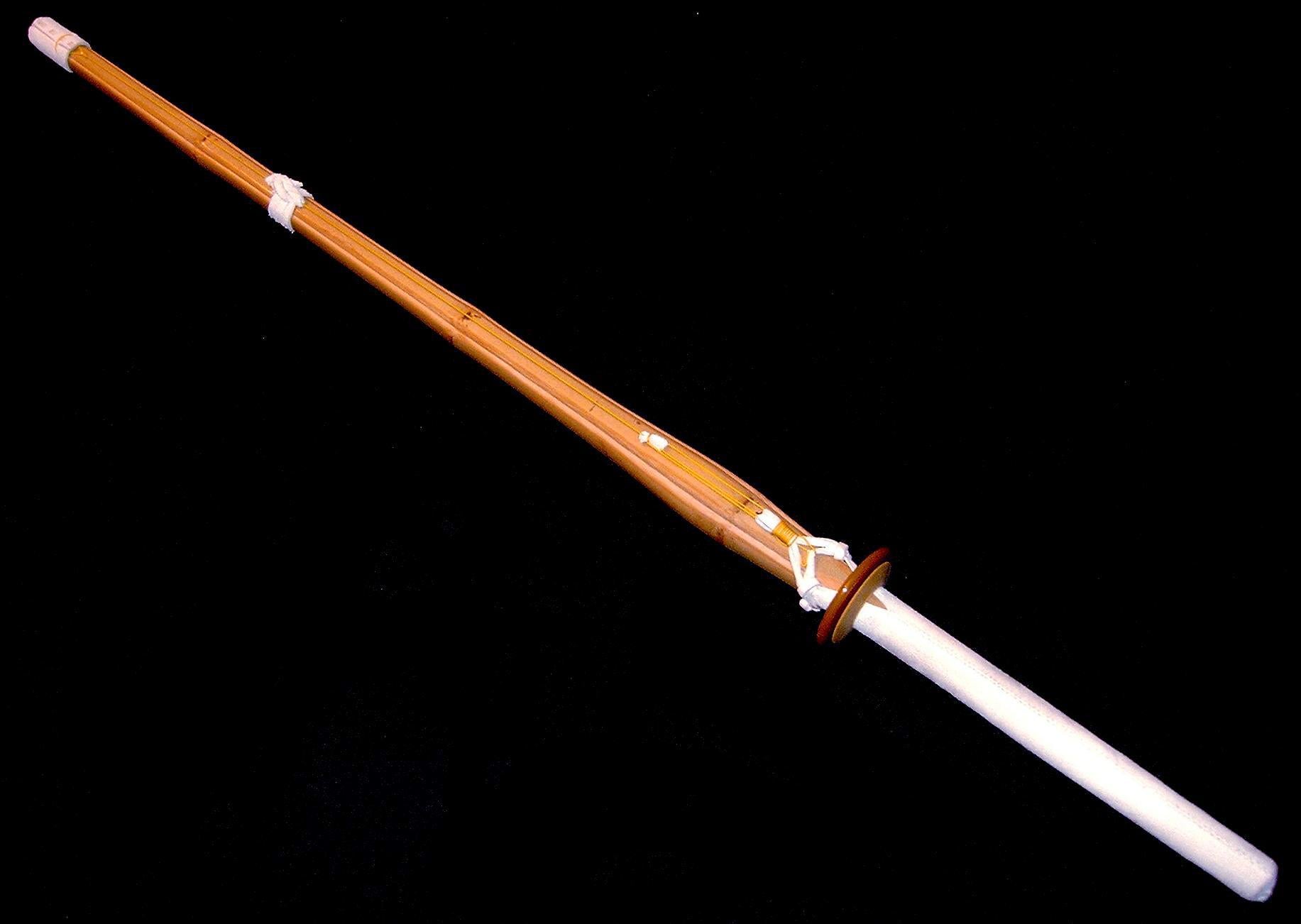Your Cart is Empty

 The shinai is an essential tool used in traditional Japanese martial arts. In kendo, for example, practitioners wear protective body armor while attempting to strike each other using the shinai. Shown to the left, the shinai doesn't resemble a typical sword. Rather, it looks like a long stick of bamboo. Practitioners still wield and use it like a sword. But because it's made of bamboo, there's little or no risk of bodily injury.
The shinai is an essential tool used in traditional Japanese martial arts. In kendo, for example, practitioners wear protective body armor while attempting to strike each other using the shinai. Shown to the left, the shinai doesn't resemble a typical sword. Rather, it looks like a long stick of bamboo. Practitioners still wield and use it like a sword. But because it's made of bamboo, there's little or no risk of bodily injury.
The shinai has been designed in a variety of ways since its origins dating back to the early 16th century. At the time, it was used as a replacement for the bokuto in traditional Japanese martial arts to minimize the risk of bodily injury. While it still serves this same purpose, the design has somewhat altered in the years since. Today, the shinai is generally designed with four individual components, which we're going to discuss in this blog post.
#1) Tsuka
Like the katana, wakizashi, tanto, tachi and countless other traditional Japanese swords, the shinai features a tsuka. This is essentially the handle or handle where the practitioner grabs and holds while wielding the shinai. It's the heaviest, densest section of the bamboo sword, providing practitioners with leverage so that they can perform powerful blows.
#2) Tsuka-Gawi
The tsuka-gawa is a component of the shinai that consists of leather wrappings around the tsuka. Its purpose is to provide practitioners with a stronger grip. Without the tsuka-gawa, martial arts practitioners would have to grab and hold the shinai's bamboo tsuka. And if their hands were sweaty, they could easily lose this grip. Consisting of leather wrappings, the tsuka-gawi was designed to prevent this from happening by creating a stronger grip.
#3) Saki-Gawi
Not to be confused with the tsuka-gawi, the saki-gawi is a special component found at the top of the shinai that's designed to protect against accidental injury. It's essentially a soft leather cap that's secured to the tip of the shinai. Without this component, a practitioner could inflict serious bodily injury by striking his or her opponent with the tip of their shinai.
#4) Naka Yui
The fourth component of the shinai is the naka yui, which is a piece of leather that's wrapped around the shinai's four bamboo slots, essentially binding them together. It's found towards the tip of the shinai, resting directly below the saki-gawa and above tsuka.